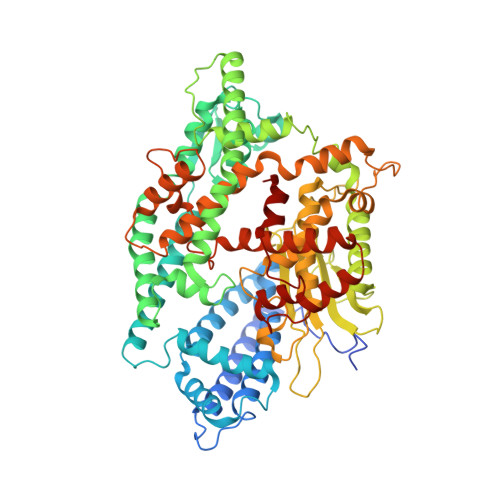Allosteric inhibition of the neuropeptidase neurolysin.
Hines, C.S., Ray, K., Schmidt, J.J., Xiong, F., Feenstra, R.W., Pras-Raves, M., de Moes, J.P., Lange, J.H., Melikishvili, M., Fried, M.G., Mortenson, P., Charlton, M., Patel, Y., Courtney, S.M., Kruse, C.G., Rodgers, D.W.(2014) J Biological Chem 289: 35605-35619
- PubMed: 25378390
- DOI: https://doi.org/10.1074/jbc.M114.620930
- Primary Citation of Related Structures:
4FXY - PubMed Abstract:
Neuropeptidases specialize in the hydrolysis of the small bioactive peptides that play a variety of signaling roles in the nervous and endocrine systems. One neuropeptidase, neurolysin, helps control the levels of the dopaminergic circuit modulator neurotensin and is a member of a fold group that includes the antihypertensive target angiotensin converting enzyme. We report the discovery of a potent inhibitor that, unexpectedly, binds away from the enzyme catalytic site. The location of the bound inhibitor suggests it disrupts activity by preventing a hinge-like motion associated with substrate binding and catalysis. In support of this model, the inhibition kinetics are mixed, with both noncompetitive and competitive components, and fluorescence polarization shows directly that the inhibitor reverses a substrate-associated conformational change. This new type of inhibition may have widespread utility in targeting neuropeptidases.
- From the Department of Molecular and Cellular Biochemistry and the Center for Structural Biology, University of Kentucky, Lexington, Kentucky 40536.
Organizational Affiliation:


















